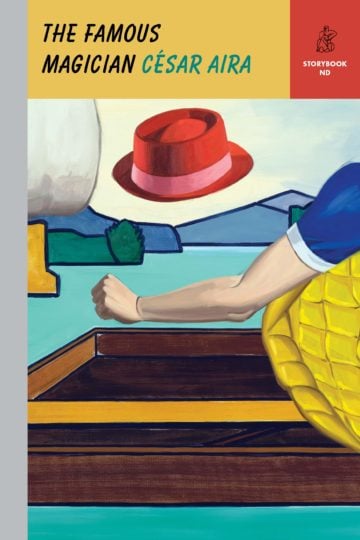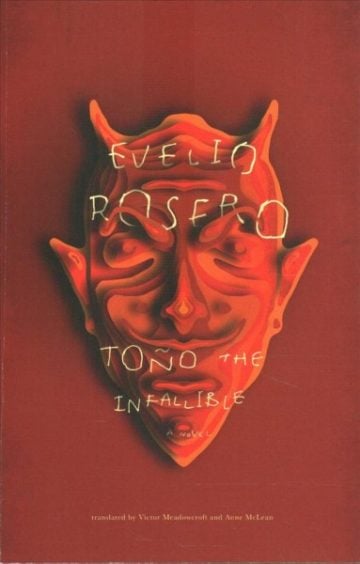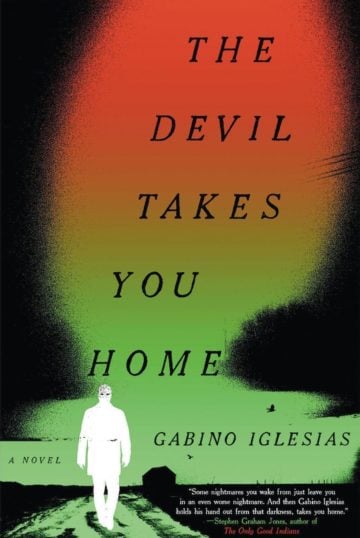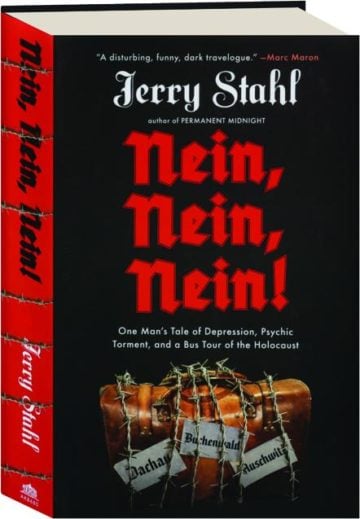Rather than YouTubing Corpse Bride clips and sneaking tequila shots from your abuelito‘s altar, here are a few thanatos-themed titles to read for Día de los Muertos.
The Famous Magician
The protagonist of César Aira’s The Famous Magician, a word-wary writer in his 60s, wants to trade the cheap tricks of the literary life for the steadier gig of sorcery.

by César Aira, translated from the Spanish by Chris Andrews
New Directions Press
The opportunity for otherworldly power arrives in the form of a lowlife bookseller named Ovando, a makeshift Mephistopheles whom author César Aira’s autofictive stand-in pejoratively pins down as “one of those no-hopers who hover around the second-hand book trade, semi-employed and scraping by, readers of Hesse and Camus.”
But this “B-grade-horror Svengali” is the real deal. Not only does Ovando nonchalantly brag about his ability to “make the laws of physics do his bidding,” but to our author’s astonishment, seems to prove it by transmuting a sugar cube into gold, then letting him pocket the proof.
In a classic deal-with-the-devil scene, Ovando says he can teach Aira his spooky tricks in exchange for “the Fairy Literature and her gifts.”
“What he had been proposing, I deduced, was that I join forces with him in order to achieve a complete mastery of power,” says the writer, who, if he chooses to follow Ovando on this intergalactic occult journey, must not only give up writing, but also refrain from reading, which is described as a dangerous waste of time that separates one from purity.
“A person appearing like a genie from a lamp to offer me magic powers in exchange for a renunciation: it was something from a tale, not something that might really happen,” notes the narrator, who then comes to find that this magic he so covets seems to be easily available to literally everyone but him, marking our hero as a special case in a dangerous chase that will take him from cyber café to sarcophagus.
Awash in alchemical aspiration and expressing an exquisite disdain for the craft of storytelling, which Aira describes as “a dull, gray time” spent “sweating away like Sysyphus to fill up the hundred or so pages required to make a book,” the writer wrestles with an inner demon of doubt over whether or not he should give up writing in pursuit of forbidden knowledge or literally stick to script.
Aira, the Argentine master of a certain strain of unabashedly self-reflexive novella that frequently marries the ingratiating confidence of fabulism with postmodern panache, has offered his audience a wicked little piece of literary wish-fullflmment gone happily awry.
Toño the Infallible
The complications of being complicit are explored in Evelio Rosero’s Toño the Infallible, a dark meditation on the rot that erupts on the body politic when absolute entitlement is paired with unchecked evil.

by Evelio Rosero, translated from the Spanish by Anne McLean and Victor Meadowcroft
New Directions
When Toño Ciruelo—the debased embodiment of a sadistic superiority complex run amok—appears at the door of a Columbian journalist named Eri, he not only demands to use the restroom right away, but then insists on spilling his guilty guts.
Although Eri has not seen Toño, a childhood friend, in decades, the dark charms of the man soon take hold: “I know that the evil that passed over Ciruelo’s features when he was fourteen years old was passing over me in that instant, at the age of fifty.”
After bragging about throwing up “worse than Nero” and listing the animals he recently ate, Toño says, “I came above all because before I die I want to confess, just like the cowards when they are about to die, when they go looking for peace on the threshold of nothingness, once it’s no longer possible to be punished or made to listen to recriminations.”
What follows is the ultimate couch-crashing situation that quickly morphs into a kind of Last Rights/therapy session wherein the intruded-upon Eri, who has avoided Toño for decades, assumes the role of uneasy priest/analyst.
Toño, a demonic wretch with “an angel’s smirk” who claims to be hunted by nuns and passes out after confessing to killing his wife, becomes a kind of think piece for Eri, representing the monstrosities of mankind that in the end always receive absolution.
As Eri’s mind races over the degradations linked to this Iago-like entity, who as a young man got his kicks by mocking the superstitions of legless peasants and employed mesmerism as a method of seduction, the journalist is struck with the fact that he has no doubt enabled this vile creature with his attention.
At the height of his dark powers, Toño started up his own Manson-like commune and, like some impresario of necrotic erotics, started staging a nightmarish Grand Guignal-styed art show called “The Exhibition of Pain.”
“Every Saturday, from six until nine in the evening, amid fantastic scenography, there was a live performance featuring some of the most relevant – in terms of sheer gore – scenes and figures from human history,” relays Eri about a show that assaulted the eyes of the “defenseless ticket holders” with the horrors of Holocaust, the Genocide of America, and employed local kids to play out unforgivable acts of cruelty that run from Caligula to Carlos the Jackal.
The atrocity exhibition that Rosero has set up for his readers in Toño the Infallible, a book that teems with casual assassination and generational incest, deftly suggests that the slipperiest sin might be humanity’s ability to excuse itself from the worst of its tribe.
Next to Toño, we are all saints—and that is exactly the kind of rationalizing that allows regular folks to feel okay with doing absolutely nothing in the face of everyday evil.
The Devil Takes You Home: A Barrio Noir
When Mario, the reluctant hitman who narrates Gabino Iglesias’s The Devil Takes You Home, learns that his four-year-old daughter Anita not only has leukemia but, due to her genetics, has very little chance of survival, he can’t help thinking of her sickness as racially motivated. “It also turns out little brown girls with acute lymphoblastic leukemia tend to have a lower cure rate than children of other races,” says Mario, who is convinced now that even awful diseases are racist.

by Gabino Iglesias
Mulholland Press
The promise of some blood money to help with his daughter’s medical bills comes to Mario by way of a meth-head coworker named Brian who tries to involve the desperate daddy in the world of cartel crime. “Call if the damn poverty noose gets too tight, yeah?” says Brian, suggesting that economic insecurity is all it takes for the working poor to rationalize murder.
Medical bills may be expensive, but in The Devil Takes You Home, life is cheap.
Once Mario becomes an assassin, he warms up to crime: “I didn’t feel bad about it. I felt good. It freaked me out a little and I couldn’t breathe, but it also felt like energy through my veins,” he explains and goes on to further quash his conscience by blaming his first victim for his daughter’s disease. “He was as guilty of Anita’s illness as everybody else,” Mario tells himself.
Rationalizing his own part in ridding the world of scum becomes a way of life for Mario.
“I told myself that if God was busy making little angels sick instead of protecting them, there was nothing wrong with me picking up the slack and putting an end to those who actually deserved it,” he says.
The Devil Takes You Home is full of characters who have come to justify their evil actions. Going online to learn about concocting a homemade gun silencer, Mario notices that “all the websites telling you how to build a suppressor belonged to the kind of white supremacist who likes to use the word patriot instead of racist.”
With his third book, Austin-based author Gabino Iglesias has written a Spillane-laced supernatural thriller that posits that the road to hell is paved with bad healthcare insurance.
Nein, Nein, Nein!
You want a guy like Jerry Stahl, the man who penned the transgressive recovery classic Permanent Midnight as well as a few episodes of Alf, to tackle the surreal business of Nazi death camp tourism.

by Jerry Stahl
Akashic Press
In 2016, the author of Perv and Pain Killers decided that taking a guided tour of the Holocaust hot spots in Germany and Poland would help him kick his divorced-dad-in-MAGA-land blues.
“I craved the in-your-face, vicious evidence of evil,” Stahl writes, “before the fascist game-show-meister transformed racism, misogyny, and national violence into America’s growth industries, and the entire country began bucking from Abusive Father Syndrome.”
“I needed to go to Naziland,” he writes, then goes on to relay stories about being mistaken for Seinfeld’s Michael Richards outside a crematorium in Auschwitz and bonding with an Astros hat-wearing boomer over a Hogan’s Heroes catchphrase.
The hallucinatory self-depreciation of Jerry Stahl’s memoir allows for a nuanced look at the audacity of the ugly American. When Stahl overhears a fellow death camp tourist pointing out that incinerators look like pizza ovens, the writer of Café Flesh complains that this disrespectful guy who he dubs Mr. Nationalist Lite is “harshing” his Holocaust, then chides himself for coming to the same cheesy conclusion.
Stahl is celebrated for his masochistic honesty that is never less than brutal and almost always on the other side of hope, but in Nein, Nein, Nein!, we get something dangerously close to an Anne Frank-level of optimism.
“I would like to think that the pain and suffering of the Holocaust and what we feel, confronted with it, can be a portal to ongoing agonies suffered by others,” he writes, noting that “you cannot compare pain. But you can have compassion, you can embrace the responsibility of doing something, anything, to comprehend and combat the horror that while not, overtly, yours, undeniably is. You can, by walking the topography of blood and screams, transform the abstract to the visceral. And do something.”


